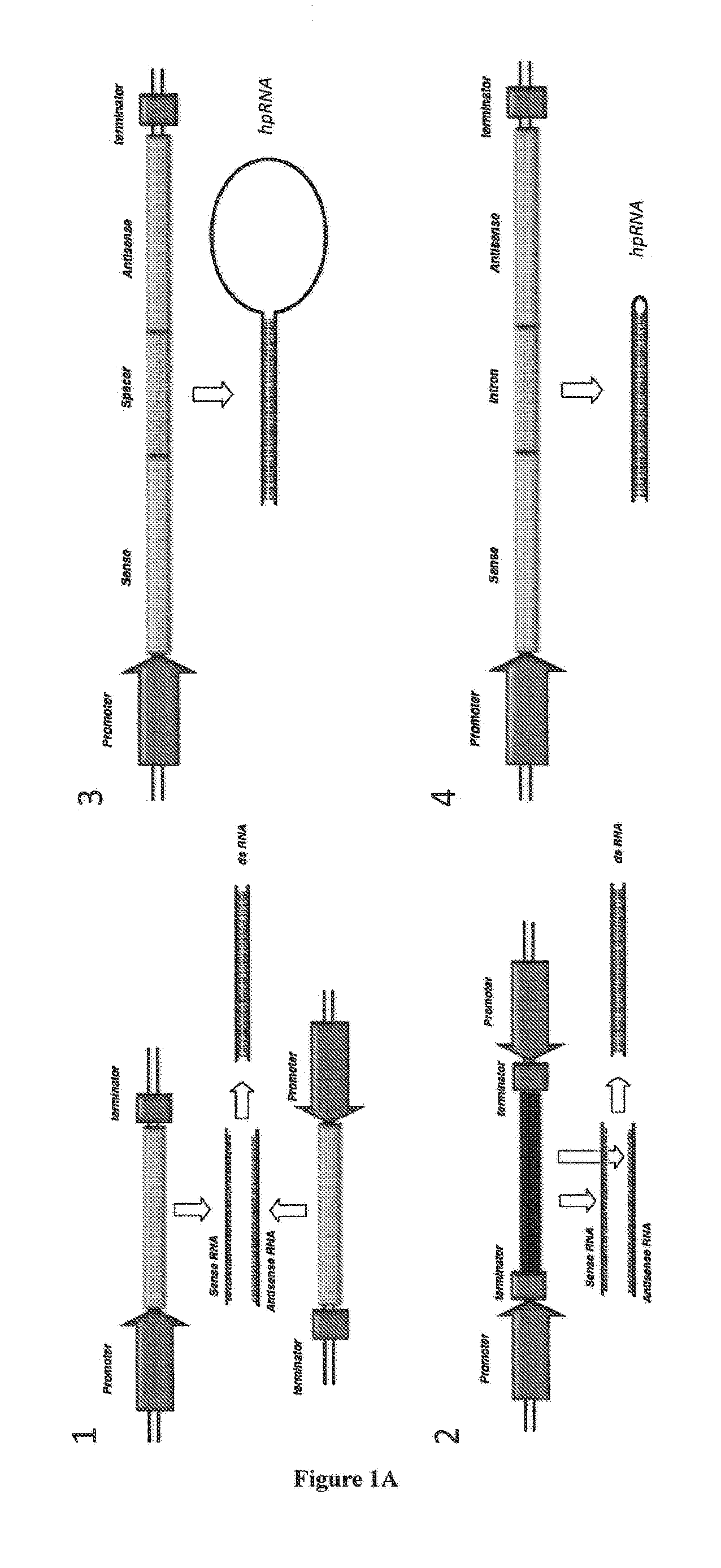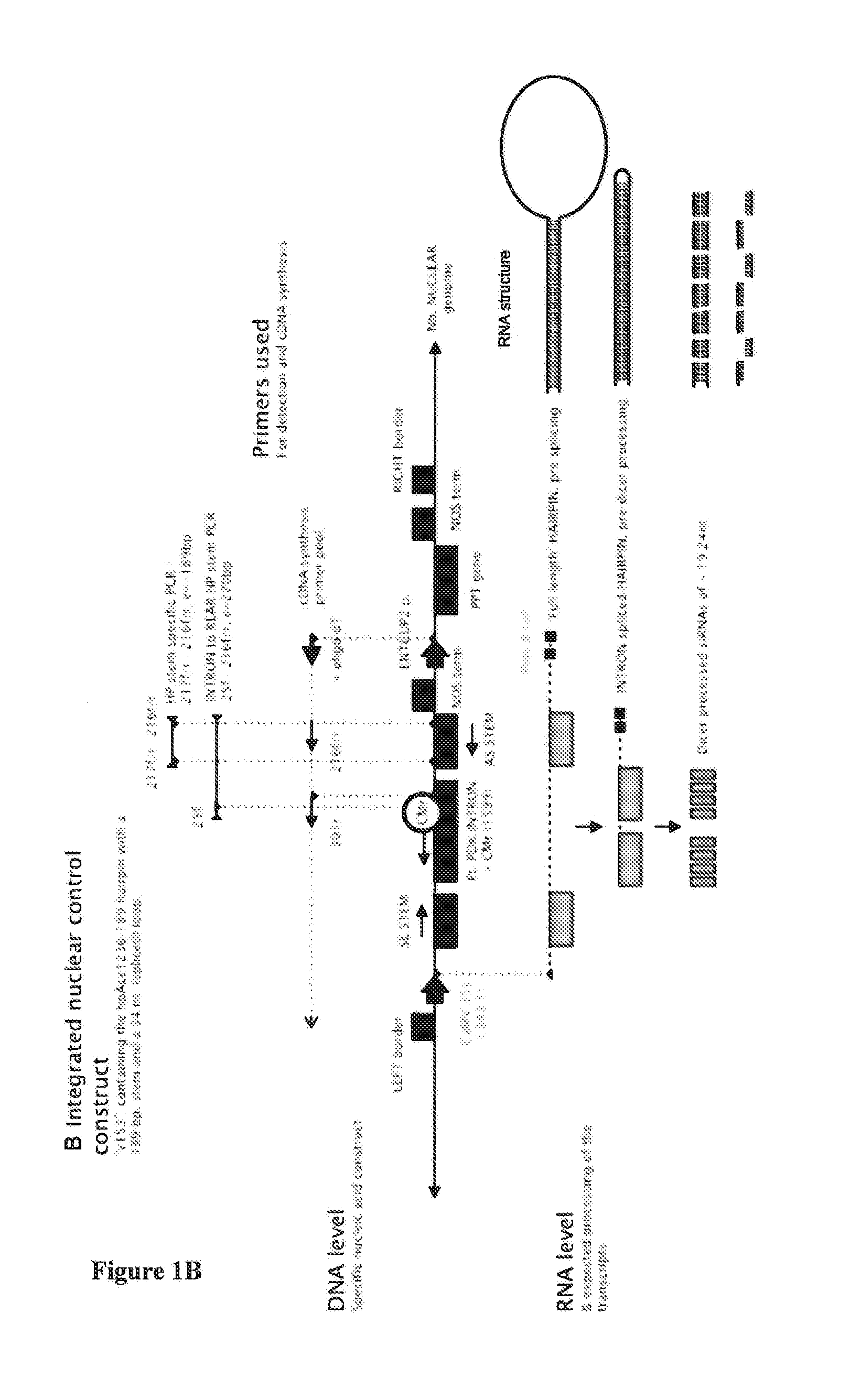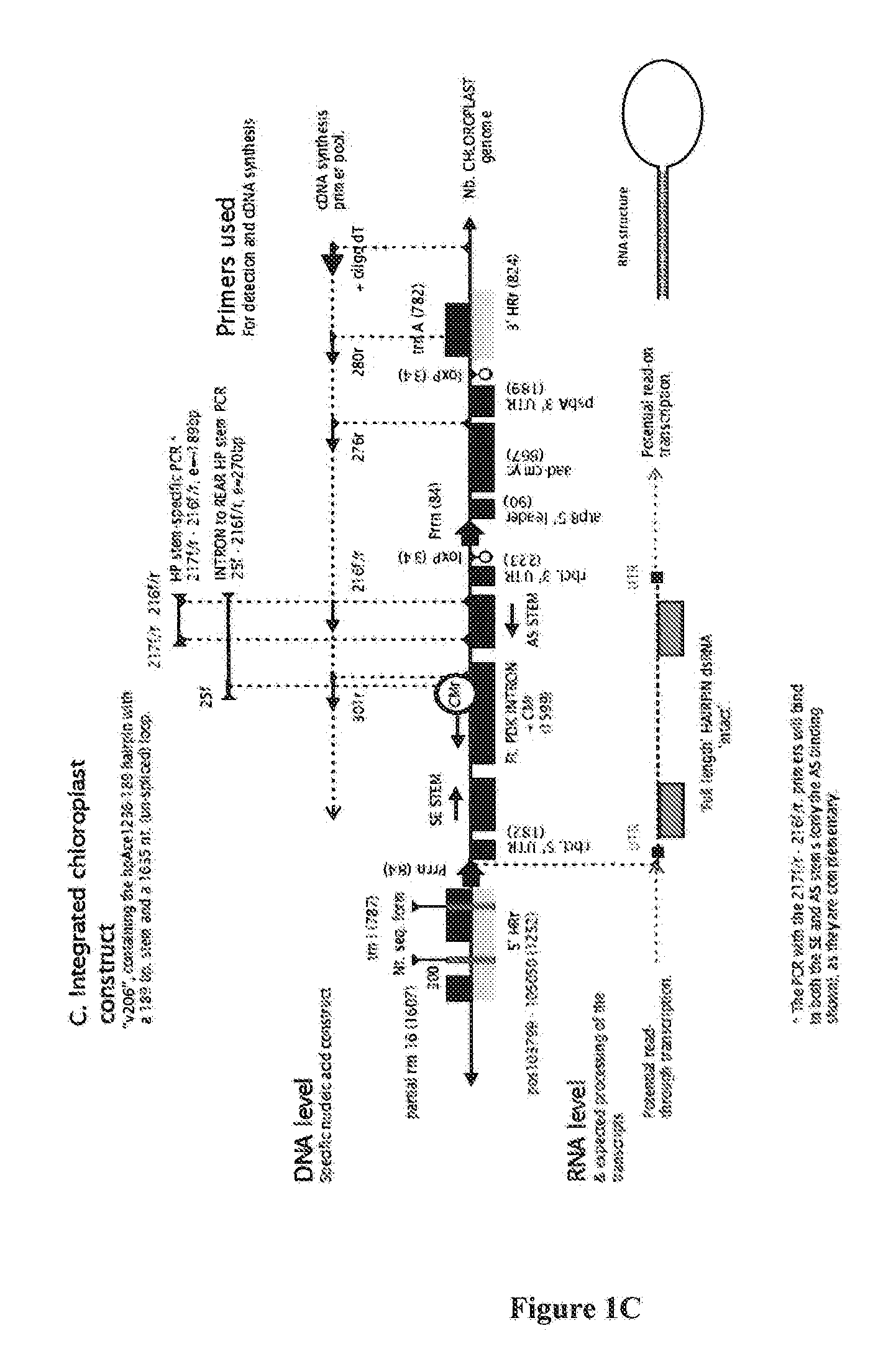RNA production in higher plants
- Summary
- Abstract
- Description
- Claims
- Application Information
AI Technical Summary
Problems solved by technology
Method used
Image
Examples
example 1
Nucleic Acid Constructs
[0286]Construction of Chloroplast Transformation Vector pR1
[0287]Chloroplast transformation constructs were derivatives of the chloroplast transformation vector pPRV323Clox (formerly pPRV312L; NCBI accession DQ489715.1) (Chakrabarti et al., 2006 and Lutz et al., 2007). This vector was designed for transformation of N. tabacum, recombining with the trnI and trnA sequences of the N. tabacum chloroplast genome. It has also been used to successfully transform the related N. benthamiana, as the N. tabacum and N. benthamiana recombination regions are 99.52% similar (only 10 of 2076 bp difference) (Davarpanah et al., 2009). The vector was originally designed for read-through expression (of a sequence of interest) from the upstream ribosomal RNA promoter (rrn16), or for insertion of a complete expression cassette upstream of the aadA selectable marker. The latter context was used in the present example.
[0288]pPRV323Clox was first modified by using ‘mutating PCR’ to co...
example 2
Transformation of Host Cells and Chloroplasts
[0301]N. benthamiana Tissue Culture Methods
[0302]N. benthamiana plants were introduced into tissue culture by first sterilizing a small volume of seed (˜50 μl volume equivalent) with Cl— gas. An open tube of the seed was freshly gassed for ˜1-4 hours in a sealed glass chamber with an open dish of 3 ml 1 N HCL added to 100 ml of hypochlorite (4% available) The seed was spread onto Murashige-Skoog medium with 3% (w / v) sucrose and 5% (w / v) noble agar (MSN) (Murashige et al., 1962). Plants were maintained in 15×6 cm pots and transferred onto new medium every 2-3 weeks or as required.
[0303]Gold Micro-Carrier Preparation (for Bombardment)
[0304]0.6 micron gold micro-carriers (Biorad) were prepared according to the manufacturer's protocol for the Biolistic PDS-1000 / He Particle Delivery System, which follows the method from Sanford et. al. (Sanford et al., 1993). Briefly, 30 mg of micro-carriers were weighed into a 1.5 ml microfuge tube, 1 ml of 7...
example 3
Confirmation of Transgene Expression Using RT-PCR
[0316]RNA Extraction and DNase Treatment
[0317]Total RNA was extracted using Trizol (Life Technologies) according to the manufacturer's protocol. Tissue for RNA extraction was similarly harvested as that previously described for DNA extraction. Tissue was snap frozen and ground with a mortar and pestle in liquid N2. Approximately 1.5 ml of Trizol was added to ˜0.5-1 ml equivalent volume of finely powdered tissue. All other volumes in the standard method were scaled accordingly (to the 1.5 ml of Trizol used). The optional isolation step was included, wherein the initial homogenate (immediately following homogenization) is centrifuged at 12,000×g for 10 min. at ˜4° C. The pellet was discarded and the cleared homogenate further processed as per the protocol. Each sample was re-suspended in ˜30-50 μl of RNase-free water (e.g. DEPC treated). Following extraction, the RNA samples were DNase treated in accordance with the manufactures protoco...
PUM
 Login to View More
Login to View More Abstract
Description
Claims
Application Information
 Login to View More
Login to View More - R&D
- Intellectual Property
- Life Sciences
- Materials
- Tech Scout
- Unparalleled Data Quality
- Higher Quality Content
- 60% Fewer Hallucinations
Browse by: Latest US Patents, China's latest patents, Technical Efficacy Thesaurus, Application Domain, Technology Topic, Popular Technical Reports.
© 2025 PatSnap. All rights reserved.Legal|Privacy policy|Modern Slavery Act Transparency Statement|Sitemap|About US| Contact US: help@patsnap.com



